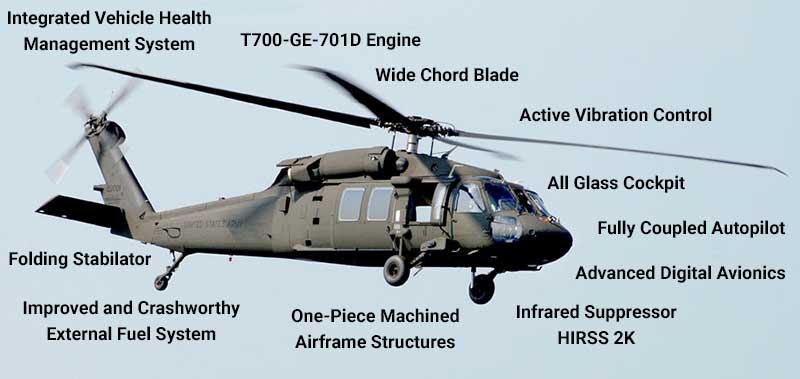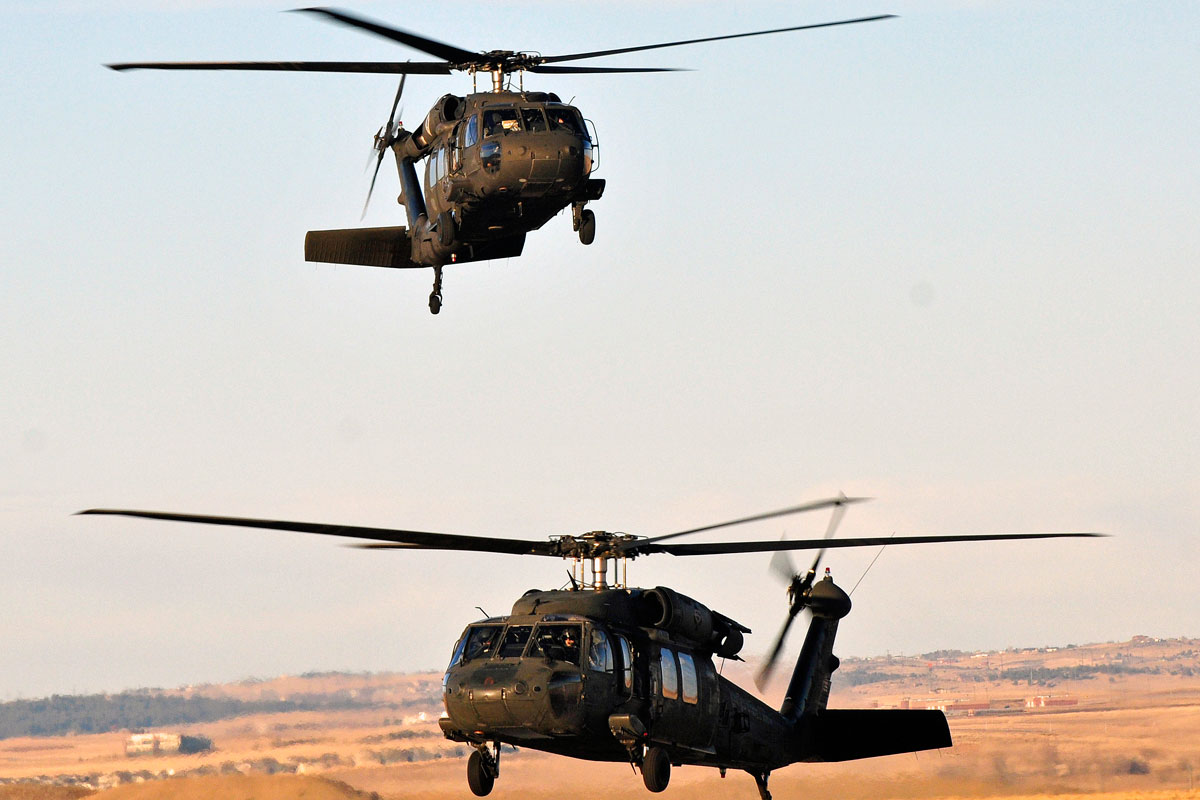Opening Peak Performance: UH 60 Helicopter Upkeep Guide
Opening Peak Performance: UH 60 Helicopter Upkeep Guide
Blog Article
Recognizing the Mechanics and Design Behind Uh 60 Helicopters
The UH-60 helicopter, frequently called the Black Hawk, stands as a peak of modern rotorcraft innovation, personifying a blend of durable engineering and elaborate technicians. From its inception to its present models, the evolution of this aircraft showcases a blend of innovation and functionality. As we peel off back the layers of the UH-60's layout, a globe of elaborate systems and careful design emerges. Understanding the mechanics and engineering behind this functional aircraft unveils a realm where precision satisfies power, and where each part plays a crucial function in accomplishing trip.
History of UH-60 Helicopters
The history of UH-60 helicopters traces back to the late 1970s when the USA Military looked for a flexible and sophisticated utility helicopter to change its aging fleet. In feedback to this demand, the Sikorsky Airplane Firm created the UH-60 Black Hawk helicopter. Presented in 1979, the UH-60 quickly became a staple in military procedures because of its excellent abilities.
The UH-60 was developed to excel in a variety of goals, consisting of troop transport, medical discharge, digital war, and special operations. Its ability to adjust to various functions made it a useful asset to the united state Army and various other army forces around the globe
Throughout the years, the UH-60 system has actually undergone numerous upgrades and variations to enhance its performance and keep speed with developing goal demands. These helicopters have actually seen considerable service in problems such as the Gulf War, Afghanistan, and Iraq, showcasing their integrity and flexibility in varied functional environments. The UH-60's rich background is a testament to its long-lasting legacy as a top utility helicopter.

Engine and Power Solutions
Using innovative propulsion innovation, UH-60 helicopters are geared up with advanced engine and power systems to make sure optimum efficiency and reliability in a variety of functional circumstances. The UH-60, generally called the Black Hawk, is powered by two General Electric T700-GE-701D engines, each with the ability of supplying up to 1,940 shaft horse power. These turboshaft engines supply the required thrust for the helicopter to execute its objectives successfully, including troop transportation, medical evacuation, and fight support.

Rotor System and Aerodynamics
Exactly how do the blades system and the rules of aerodynamics of UH-60 helicopters contribute to their functional effectiveness and trip capabilities? The rotor system of the UH-60 helicopter plays a crucial role in offering lift and propulsion. The UH-60 features a four-bladed, completely verbalized rotor system that permits high ability to move and security throughout trip. This design enables the helicopter to do a variety of missions, from transport and clinical emptying to battle procedures.
Aerodynamics also play a vital function in the performance of UH-60 helicopters. The structured fuselage and blades blade style decrease drag, allowing the helicopter to attain greater speeds and far better fuel efficiency. The wind resistant design of the UH-60 additionally adds to its capacity to run in diverse ecological conditions, consisting of hot temperature levels and high altitudes.
Avionics and Trip Control Systems

In its detailed coordination with the rotor system and the rules of aerodynamics of UH-60 helicopters, the avionics and trip control systems form an important network of modern technologies shaping the aircraft's functional capacities. In the UH-60, these systems include digital displays, interaction radios, General practitioner navigating, climate radar, and autopilot systems.
The flight control systems of the UH-60 are in charge of equating the pilot's inputs right into the proper changes to the blades system, ensuring stable flight and maneuverability. These systems consist of hydraulic actuators, servos, and computers that interact to manage the major and tail rotors, as well as various other trip control surface areas. By precisely managing the helicopter's flight dynamics, these systems allow pilots to do a wide range of objectives, from transportation and search-and-rescue to combat operations, with accuracy and confidence.
Role and Applications in Air Travel
The duty and applications of avionics and trip control systems in aeronautics are essential to making sure the safe and efficient procedure of aircraft, including UH-60 helicopters. Avionics systems in UH-60 helicopters encompass a series of digital systems that aid in navigation, communication, surveillance, and regulating different aircraft features. These systems consist of digital displays, auto-pilot systems, interaction radios, GPS navigating tools, and weather condition radar. Flight control systems play a vital function in navigating the helicopter in the air, keeping security, and guaranteeing precise movements. The fly-by-wire technology made use of in modern-day UH-60 helicopters equates pilot inputs into electronic signals, which are after that analyzed by the flight control computers to readjust the aircraft's control surface my response areas. Furthermore, check out here these systems incorporate safety and security features such as auto-pilot modes, surface awareness advising systems, and stability enhancement systems to improve the total security and operational capabilities of the UH-60 helicopters in different missions, including army transport, clinical evacuation, search and rescue, and airborne firefighting.
Conclusion
To conclude, the UH-60 helicopter is a functional airplane with an abundant history and advanced engineering. Its engine and power systems, blades system, the rules of aerodynamics, avionics, and trip control systems all interact to make it a dependable and effective device. The UH-60's duty and applications in aeronautics are vast, ranging from army operations to browse and save missions. Its continued growth and use demonstrate its value in the field of air travel (uh 60).
In its elaborate sychronisation with the rotor system and the rules of aerodynamics of UH-60 helicopters, the avionics and flight Click Here control systems form a critical network of technologies shaping the aircraft's functional abilities.The trip control systems of the UH-60 are responsible for translating the pilot's inputs into the appropriate adjustments to the blades system, making certain stable trip and maneuverability. Avionics systems in UH-60 helicopters encompass an array of digital systems that aid in navigation, interaction, tracking, and managing various airplane functions. Additionally, these systems include security functions such as auto-pilot settings, terrain recognition alerting systems, and stability enhancement systems to improve the overall safety and security and operational capabilities of the UH-60 helicopters in numerous missions, consisting of troop transport, clinical emptying, search and rescue, and aerial firefighting.
Its engine and power systems, blades system, the rules of aerodynamics, avionics, and trip control systems all function with each other to make it a dependable and efficient device.
Report this page